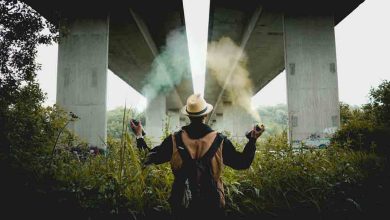Life Style: Jameela Jamil calls out Kim Kardashian for work ethic comments

How Jordanian-Palestinian architect Abeer Seikaly is reviving traditional design skills to help refugees
LONDON: Jordanian-Palestinian architect and artist Abeer Seikaly has, for the past decade or so, focused on creating a reimagined utilization of Arab craft traditions to improve living conditions for refugees.
Back in 2013, Seikaly was awarded the international Lexus Design Award for a performative structural system that explored the social implications of creating homes for displaced communities.
Her subsequent “Weaving a Home” project fuses the latest innovations in materials with centuries-old Arabic design and craftsmanship. Seikaly is driven by a desire to help those fleeing war and poverty. She has seen first-hand the day-to-day problems in refugee camps — including extreme temperatures at both ends of the scale and unsanitary conditions. Many of the traditional skills she advocates have been handed down through generations but have somehow become lost or abandoned in the drive for modernity.
“The objective (of “Weaving a Home”) was to build a portable, dignified shelter for displaced communities that provides them with the necessities of contemporary life through the development of a double-layered performative structural fabric in the form of a dome,” she tells Arab News. “However, the design’s contextual link to land, culture and heritage highlighted the need to consider the wellbeing of different communities beyond simply providing functional solutions.”
The dome-shaped living spaces draw inspiration from traditional tent-crafting methods. The structures are resilient and collapsible with mesh for windows and storage and a stretchable solar fabric for sustainable energy, which feeds flexible pipes for water, heat, and electricity.
The dual-layer structure is designed to shut out rain and cold while allowing cool air in and hot air out in the summer. The top of the dome collects rainwater and filters it down the sides to prevent flooding. The structure can also be used as a shower, with water stored in pockets on the side and drawn upwards using a thermosiphoning system that provides basic sanitation. Solar energy drawn by the tent fabric is stored in a battery for use at night, providing renewable electricity.

Seikaly is hopeful that mass production will be possible with the right backing.
“The design has been going through several iterations and developments in terms of ways of assembly and material in the past few years,” she says. “Throughout the years, I have received support from a generous group of individuals who want to see (mass production) happen.”
According to the United Nations High Commissioner for Refugees, at least 82.4 million people around the world have been forced to flee their homes. Among them are nearly 26.4 million refugees, around half of whom are under the age of 18. It is the scale of this crisis that drives Seikaly to keep pushing her project forward.

Her homeland knows all too well the pressures of trying to accommodate a large volume of refugees. Jordan hosts 760,000 refugees and asylum seekers registered with UNHCR. Of those, some 670,000 are from Syria, making Jordan home to the second-largest number of Syrian refugees per capita globally, behind Lebanon.
Seikaly recently returned to Jordan after teaching a semester at the Yale School of Architecture. Her course “Conscious Skins,” reveals some of the key elements of her thinking: the skin or fabric molded by a maker with a conscious awareness and practical knowledge of the technique, tradition and artisanship involved.
“The demographics of Jordan are constantly changing. Many of our building traditions are no longer practiced and are disappearing. There are individual and collective initiatives that currently work towards maintaining traditional knowledge and its practices. We need to think about new ways to build our cities and preserve the country’s precious heritage landscapes,” Seikaly says.
“Displacement is a big issue,” she continues. “We live in a world of homelessness. But times are changing and we will have to adapt and be more conscious of how we’re interacting with each other and our environment. I am always hopeful and believe that there are opportunities to expand and co-create for a better future.”
Noting that the news was copied from another site and all rights reserved to the original source.
xnxx,
xvideos,
porn,
porn,
xnxx,
Phim sex,
mp3 download,
sex 4K,
Straka Pga,
gay teen porn,
Hentai haven,
free Hentai,
xnxx,
xvideos,
porn,
porn,
xnxx,
Phim sex,
mp3 download,
sex 4K,
Straka Pga,
gay teen porn,
Hentai haven,
free Hentai,




